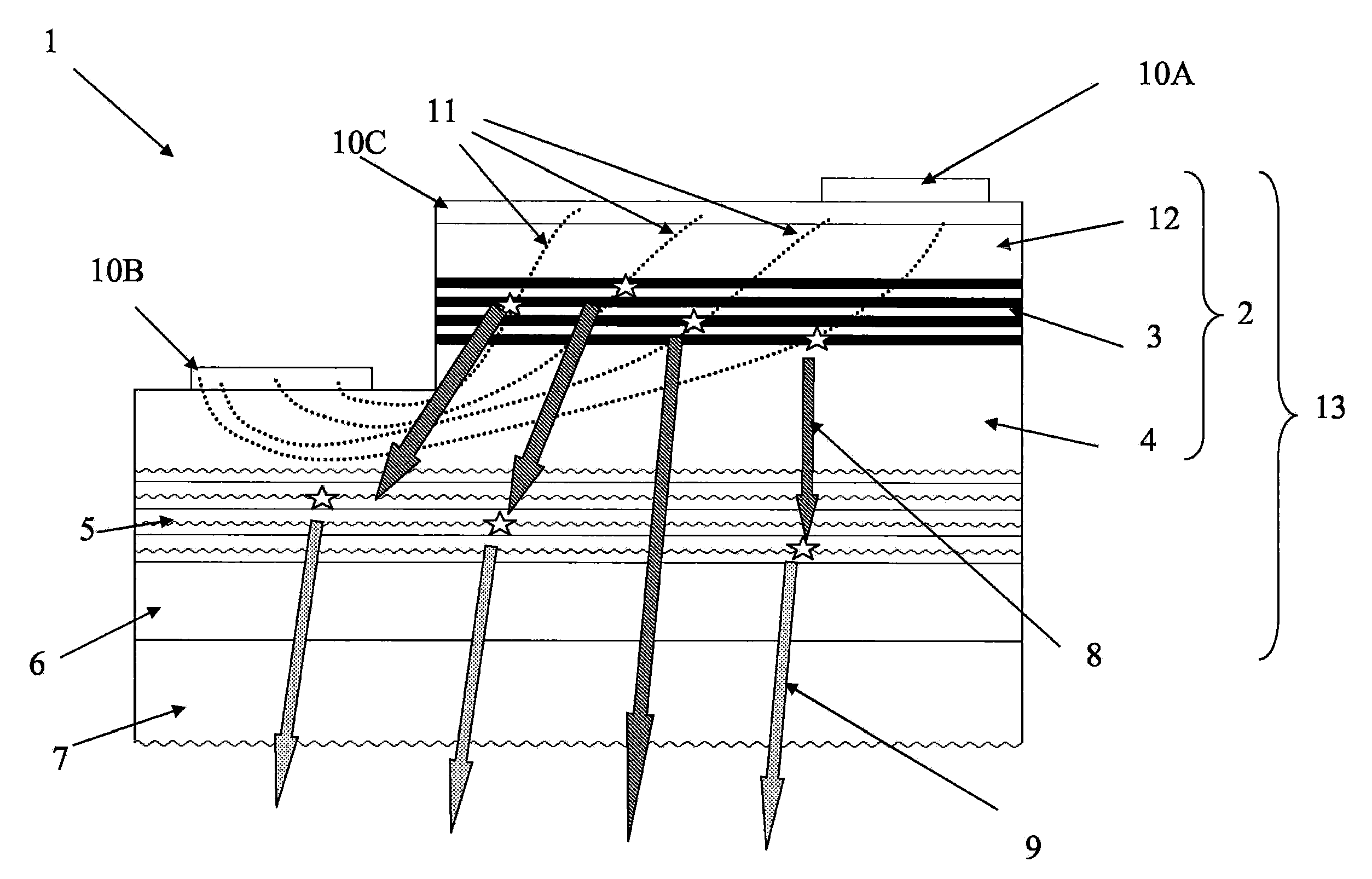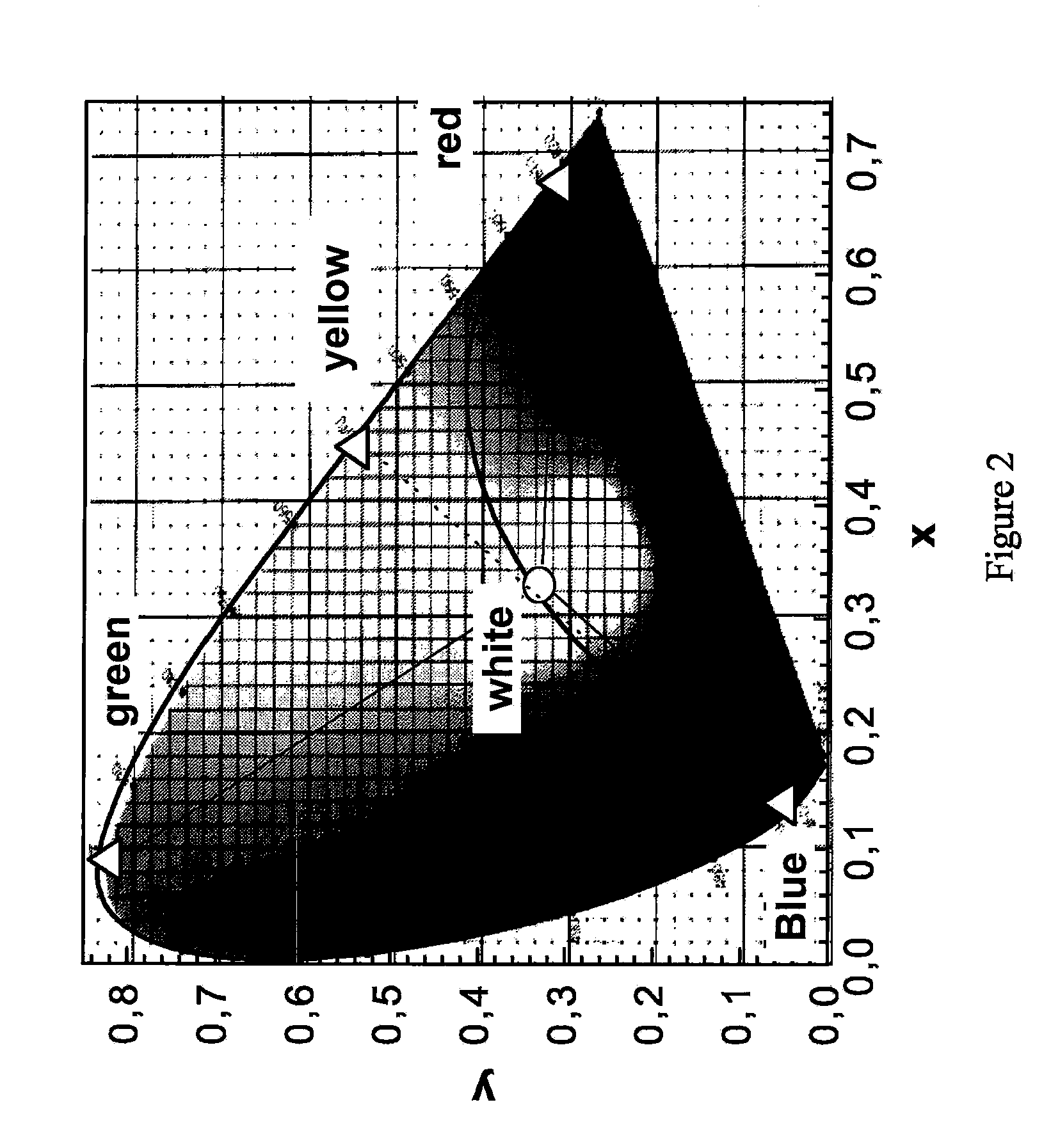Method of manufacturing a light-emitting diode
a manufacturing method and light-emitting diode technology, applied in semiconductor/solid-state device manufacturing, semiconductor devices, electrical equipment, etc., can solve the problems of deterioration of deterioration of the white light, and drawback of the white light when lighting, so as to improve the general performance of the device over time, the effect of emission properties and higher production costs
- Summary
- Abstract
- Description
- Claims
- Application Information
AI Technical Summary
Benefits of technology
Problems solved by technology
Method used
Image
Examples
Embodiment Construction
[0026]As illustrated in FIG. 1, a light-emitting diode 1 according to the invention includes a substrate 7 on which a matrix 13 is formed which comprises various portions which will be described in further details hereinunder. The matrix 13 first includes an active portion conducting electric current and more particularly current lines 11. Such electric current is generated by current generating means, for example, by metal contacts in the form of a positive terminal 10A and a negative terminal 10B and a semitransparent contact 10C. The active portion of the matrix 13 is thus defined as the portion of the matrix through which the current emitted by the current generating means 10A, 10B and 10C passes. Such active portion comprises a first zone 3 positioned in the active portion so as to be gone through by the current lines 11. Such zone 3 corresponds to a quantum confinement able to be electrically pumped by the current emitted by the current generating means 10A, 10B and 10C. It wi...
PUM
 Login to View More
Login to View More Abstract
Description
Claims
Application Information
 Login to View More
Login to View More - R&D
- Intellectual Property
- Life Sciences
- Materials
- Tech Scout
- Unparalleled Data Quality
- Higher Quality Content
- 60% Fewer Hallucinations
Browse by: Latest US Patents, China's latest patents, Technical Efficacy Thesaurus, Application Domain, Technology Topic, Popular Technical Reports.
© 2025 PatSnap. All rights reserved.Legal|Privacy policy|Modern Slavery Act Transparency Statement|Sitemap|About US| Contact US: help@patsnap.com



